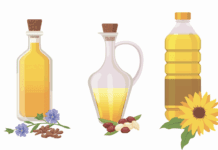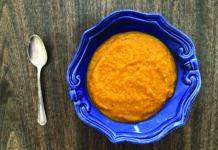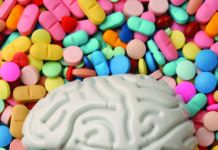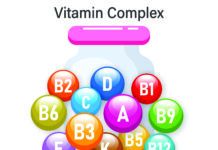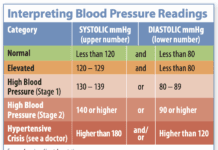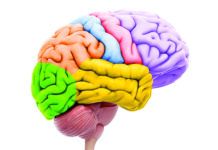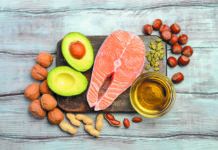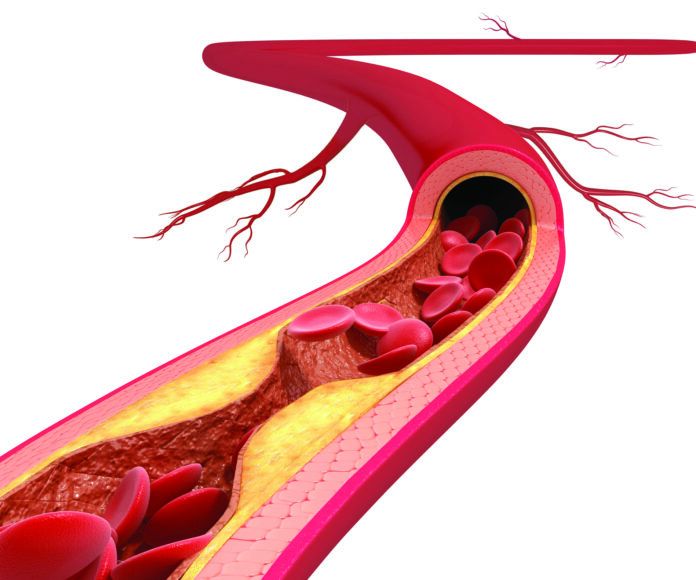About half of Americans between the ages of 45 and 84 have some degree of atherosclerosis, and many don’t even know it. That’s worrisome because atherosclerosis can lead to a heart attack or stroke, as well as other life-threatening conditions, including kidney failure.
“Athero” What? Athero comes from a Greek word for porridge or gruel. This colorful term refers to the plaque made up of cholesterol and other material that builds up inside your arteries (the blood vessels that carry oxygenated blood throughout your body).
As plaque builds up over time, the arteries get narrower, reducing the supply of blood to all parts of your body. The arteries also get stiffer. Sclerosis means “hardening.” Atherosclerosis is a type of arteriosclerosis which translates to “hardening of the arteries.”
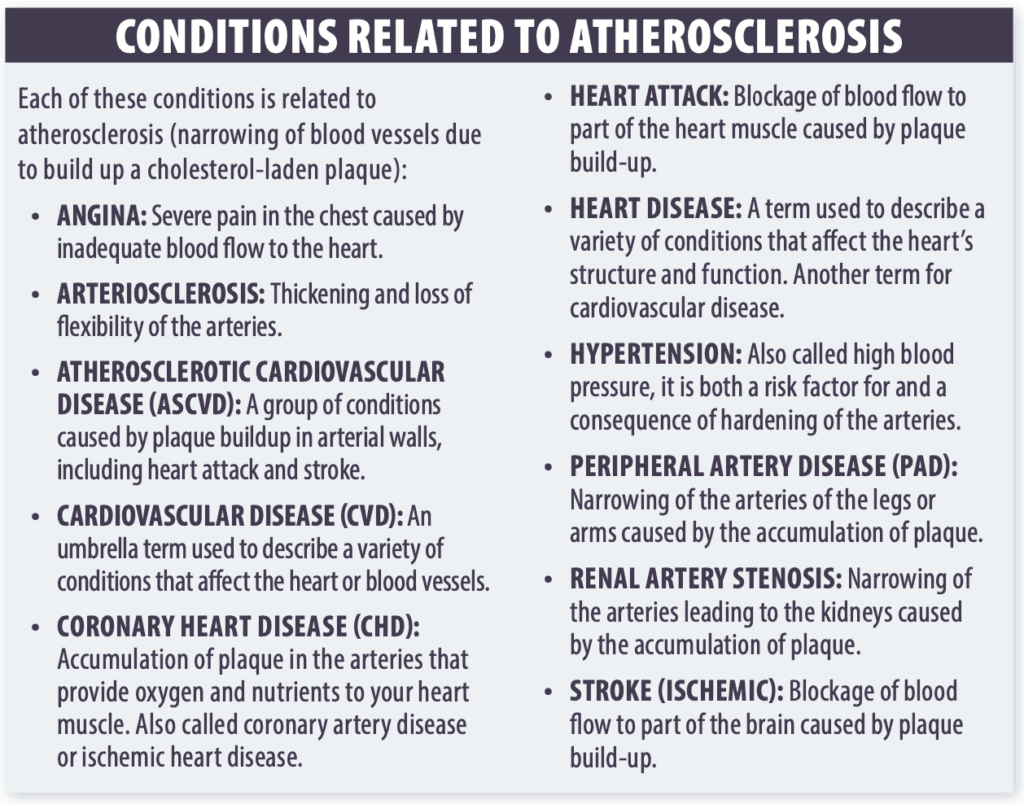
The prevalence of atherosclerosis increases as we get older. In some cases, there is a genetic component. While we can’t do anything about age or genes, we do have some control over other risk factors that affect atherosclerotic plaque build-up, including blood levels of LDL (low-density lipoprotein) cholesterol, high blood pressure, type 2 diabetes, excess body weight, tobacco product use, physical inactivity, inadequate sleep, high levels of stress, and excessive alcohol intake.
Health Effects. The health effects of atherosclerosis depend on where the plaque forms. For example, atherosclerosis in the arteries that supply blood to heart muscle can result in angina (chest pain, usually during exertion) and, eventually, heart attack.
Atherosclerosis that reduces blood supply to the kidney is known as renal artery stenosis. This condition can lead to reduced kidney function over time, cause high blood pressure, and, in severe cases, result in kidney failure.
Plaque buildup in the arteries that supply blood to your legs and arms is known as peripheral artery disease (PAD). PAD increases the risk of developing infections, sores, and death of tissue in the legs and arms, with extreme cases leading to loss of limbs. The most common symptom of PAD is pain in your arms and, more often, legs due to inadequate oxygen getting to the muscles. The pain typically starts with walking or exercise and goes away with rest. Symptoms aren’t usually obvious until an artery is over 60 percent blocked by plaque, so it’s important to address risk factors like high LDL cholesterol and high blood pressure well before the problem is obvious.
Atherosclerotic plaque build-up anywhere in the body can rupture and trigger the formation of a blood clot, known as a thrombus, which can block blood flow, and therefore delivery of oxygen and nutrients to tissues. Blood clots that block blood flow in the arteries that nourish the heart cause a heart attack, and those in the brain cause a stroke. Blood clots that block the arms or legs are called deep vein thrombosis and can cause complications, including inflammation of the vein (phlebitis), leg ulcers, and blood clots that travel to the lungs (pulmonary embolism).
Atherosclerosis is also a contributor to high blood pressure. As plaque builds up in arteries they stiffen. They are less able to stretch when the heart pushes blood into them with each heartbeat. This increases blood pressure.
Impact of Dietary Intake. A healthy dietary pattern can help prevent, manage, and even reverse high blood levels of LDL cholesterol, high blood pressure, and other diet-related risk factors for atherosclerosis, like type 2 diabetes and excess body weight.
“The main component of arterial plaque is the cholesterol that comes from low-density lipoprotein (LDL),” says Alice H. Lichtenstein, DSc, senior scientist and director of the Cardiovascular Nutrition Team at the Human Nutrition Research Center on Aging and editor-in-chief of this newsletter. “Achieving and maintaining blood LDL cholesterol levels in the healthy range (with diet or, when necessary, medication) is essential.” To reduce LDL cholesterol levels, the major focus should be on replacing saturated fats from foods like red meats (beef, lamb, pork, venison); processed meats (deli meats, bacon, sausage, jerky, hot dogs); and butter and full fat dairy products with healthy unsaturated fats from plant sources like nuts, seeds, plant oils (such as soybean, olive, canola, corn, and sunflower), and avocados and increasing dietary fiber from fruits, vegetables, beans, and whole grains.
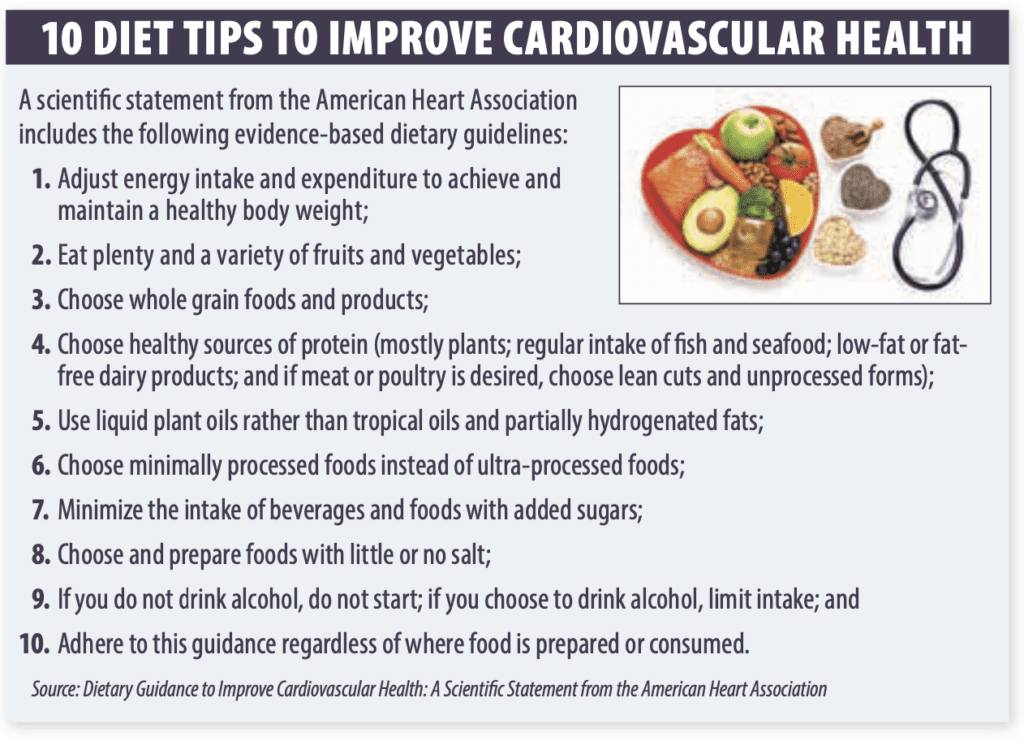
If you have high blood pressure, decrease the amount of salt (sodium) you consume and ensure you’re getting enough potassium by including plenty of fruits and vegetables in your diet. In general, choose unprocessed or minimally processed fruits, vegetables, legumes, nuts/seeds, whole grains, low-fat and fat free dairy, seafood, poultry, lean cuts of red meat, and liquid plant oils, and minimize ultraprocessed foods, salt/sodium, added sugars, and alcohol.
Shifting to a more plant-based diet can help reach LDL cholesterol and blood pressure goals. If plant-based meals are new to you, start with one vegetarian or vegan dinner a week, and build up a collection of favorite recipes. Look for recipes that feature beans, lentils, or tofu, plenty of vegetables, and whole grains rather than using ultraprocessed plant-based meat substitutes. Avoid recipes with lots of cheese or cream.
Beyond diet quality, avoid tobacco, meet physical activity guidelines of 150 minutes of weekly moderate-intensity activity, work to reduce excess body weight, get adequate sleep (seven to nine hours a night), and manage stress (building in time for things you enjoy such as reading, meditation, dancing, deep breathing, or other relaxing pursuits can help).
➧ Control Your LDL Cholesterol: Get help modifying your diet to lower high LDL-cholesterol levels and use cholesterol-lowering medications if necessry. ➧ Manage high Blood Pressure: Decrease your salt (sodium) intake, increase potassium intake from fruits and vegetables, and take medication if necessary. ➧ Consume a Healthy Dietary Pattern: Replace foods rich in saturated fat with those containing unsaturated, and shift towards a more plant-based diet. (See 10 Diet Tips to Improve Cardiovascular Health for more information.) ➧ Make Healthy Lifestyle Choices: Avoid tobacco, meet physical activity guidelines of 150 minutes of weekly moderate-intensity activity, reduce excess body wight, get seven to nine hours of sleep a night, and manage stress.
Since atherosclerosis is the main cause of cardiovascular disease (CVD), the American Heart Association (AHA) has published evidence-based dietary guidance to improve cardiovascular health. (Lichtenstein was co-lead author of this statement.) These recommendations can help control many of the risk factors that cause atherosclerosis (See 10 Diet Tips to Improve Cardiovascular Health).
“Even for someone at elevated risk of developing atherosclerosis due to genetic factors, adopting a healthy lifestyle is associated with lower risk of having a cardiovascular event,” says Lichtenstein, “and it is never too late to start!”

